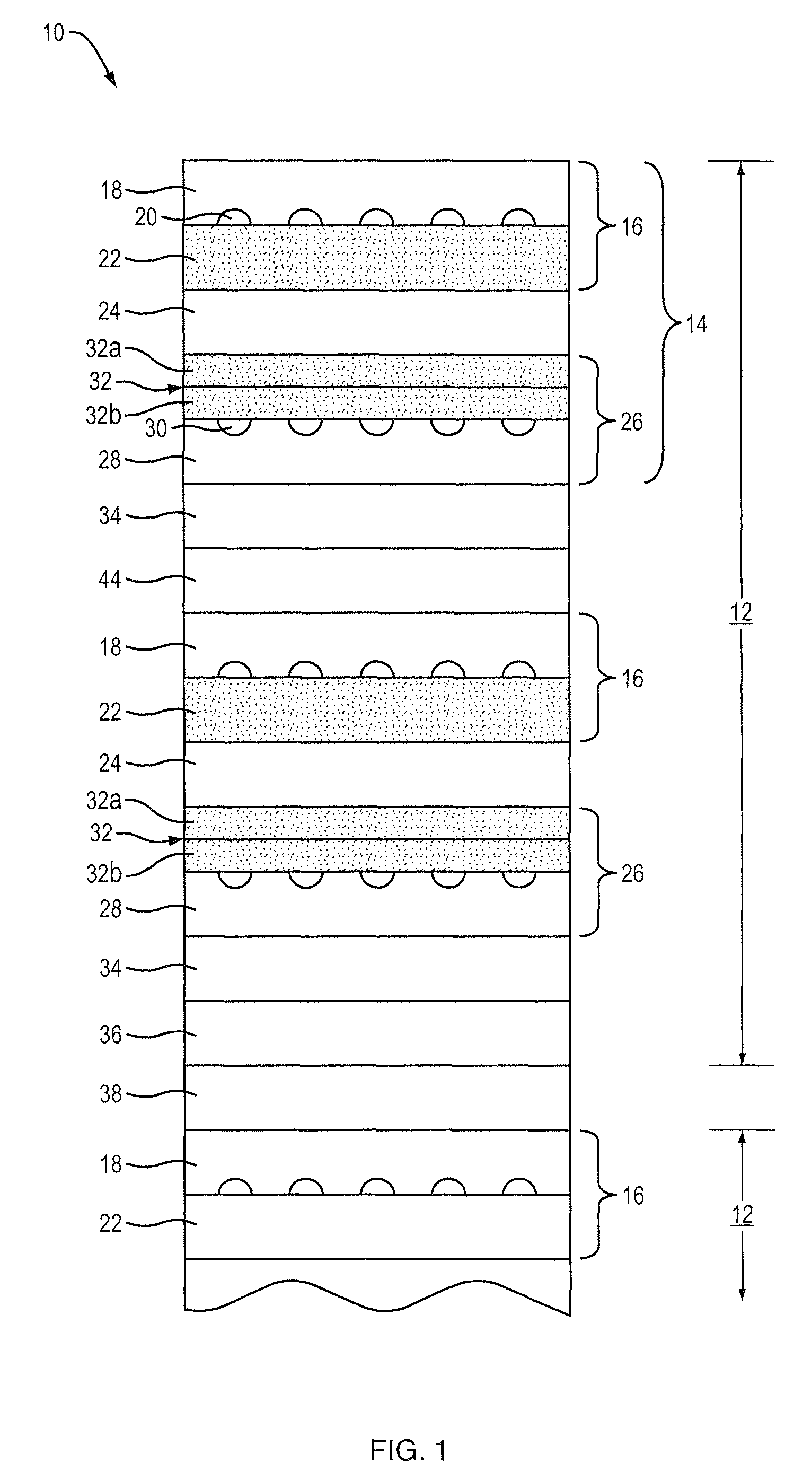SOFC cathode and method for cofired cells and stacks
a cofired cell and stack technology, applied in the field of cofired cell and stack cofired cathode and method, can solve the problems of easy damage to the fabrication of fuel cells and stacks, and achieve the effects of eliminating the requirement of air permeability, simplifying co-fireing, and great flexibility
- Summary
- Abstract
- Description
- Claims
- Application Information
AI Technical Summary
Benefits of technology
Problems solved by technology
Method used
Image
Examples
second embodiment
[0038]In a second embodiment, a plurality of anode subcomponents 40, cathode subcomponents 42 and green functional cathode layers 32 are co-fired at a suitable temperature, preferably lower than that employed to form each of the anode subcomponents 40 and cathode subcomponents 42, to thereby form fired subcells. The fired subcells 14 are then arranged together with conformable anode bond layer 44 and compressed into a fuel cell stack 8. An example of a suitable conformable bonding layer is a bonding layer that includes nickel mesh or nickel felt preferably coated with nickel paste.
third embodiment
[0039]In a third embodiment, a plurality of anode subcomponents 40, cathode subcomponents 42 that contain a terminal anode, green functional cathode layers 32 and green anode bond layer 44 can be arranged and co-fired at a suitable temperature, preferably lower than that employed to form each of the anode subcomponents 40 and cathode subcomponents 42, to thereby form a fuel cell stack 8. An example of a suitable anode bond layer is a layer consisting of Ni metal with YSZ ceramic or Ni with YSZ and interconnect ceramic material.
fourth embodiment
[0040]In a fourth embodiment, a plurality of anode subcomponents 40, cathode subcomponents 42 that contain a terminal anode and green functional cathode layers 32 are co-fired at a suitable temperature, preferably lower than that employed to form each of the anode subcomponents 40 and cathode subcomponents 42, to thereby form fired subcells. The fired subcells 14 are then arranged together with conformable anode bond layer 44 and compressed into a fuel cell stack 8. An example of a suitable conformable bonding layer is a bonding layer that includes nickel mesh or nickel felt preferably coated with Ni paste.
PUM
| Property | Measurement | Unit |
|---|---|---|
| median particle size | aaaaa | aaaaa |
| particle size | aaaaa | aaaaa |
| grain size | aaaaa | aaaaa |
Abstract
Description
Claims
Application Information
 Login to View More
Login to View More - R&D
- Intellectual Property
- Life Sciences
- Materials
- Tech Scout
- Unparalleled Data Quality
- Higher Quality Content
- 60% Fewer Hallucinations
Browse by: Latest US Patents, China's latest patents, Technical Efficacy Thesaurus, Application Domain, Technology Topic, Popular Technical Reports.
© 2025 PatSnap. All rights reserved.Legal|Privacy policy|Modern Slavery Act Transparency Statement|Sitemap|About US| Contact US: help@patsnap.com



